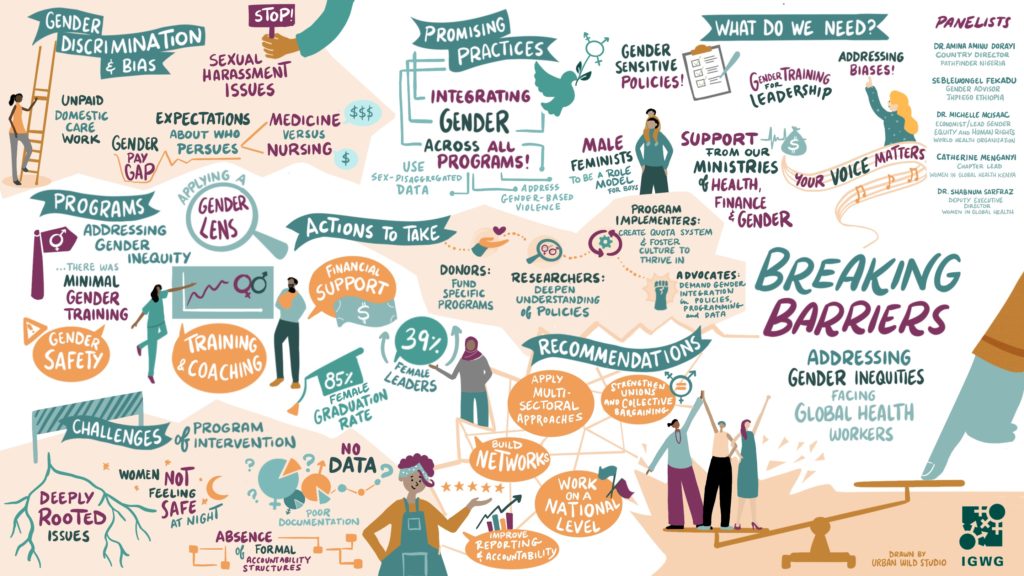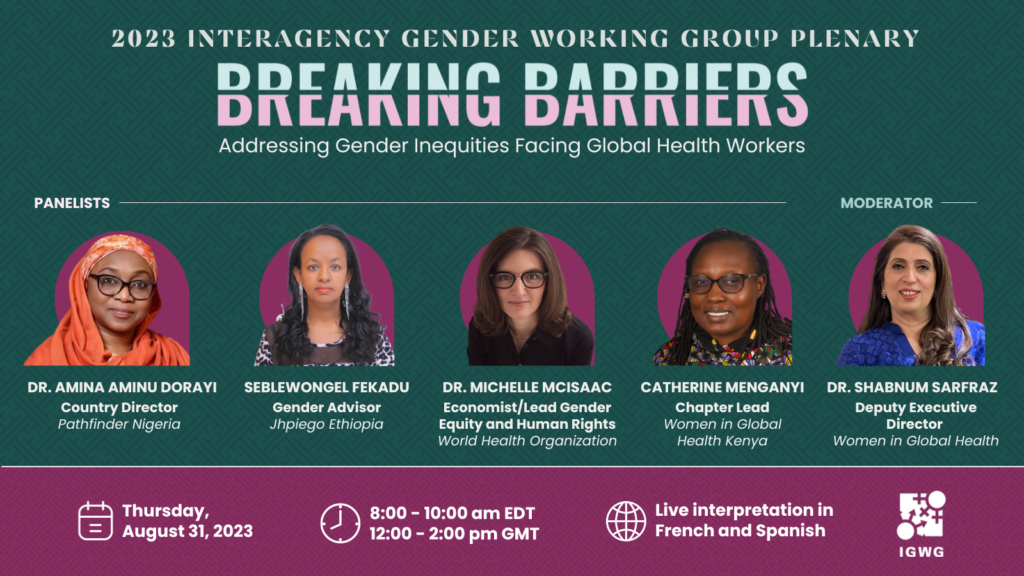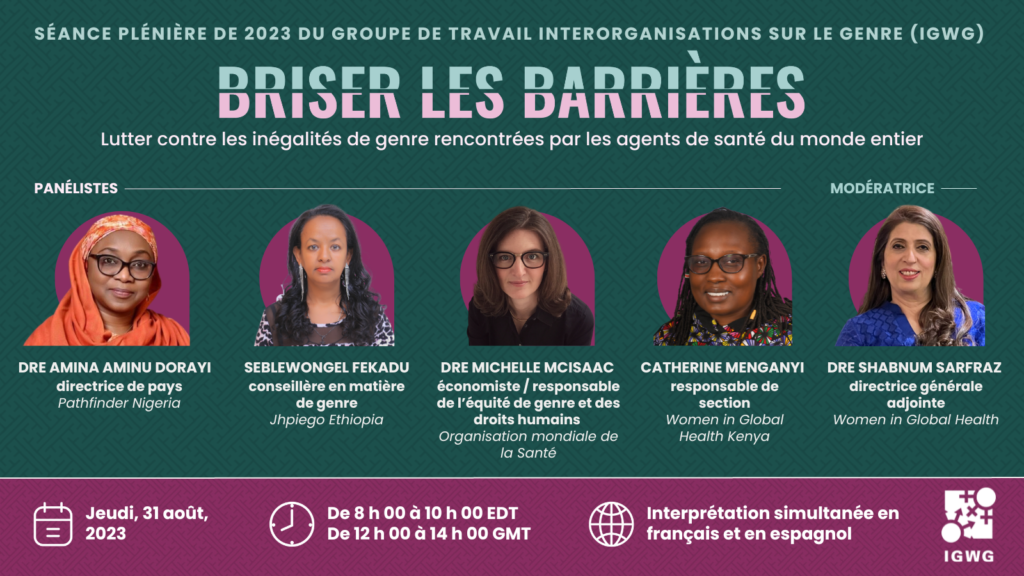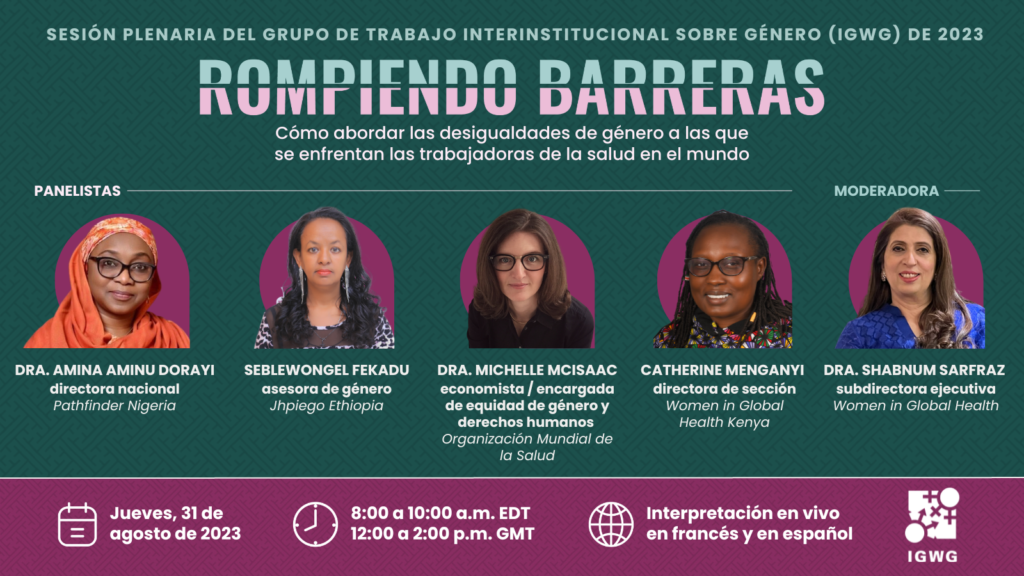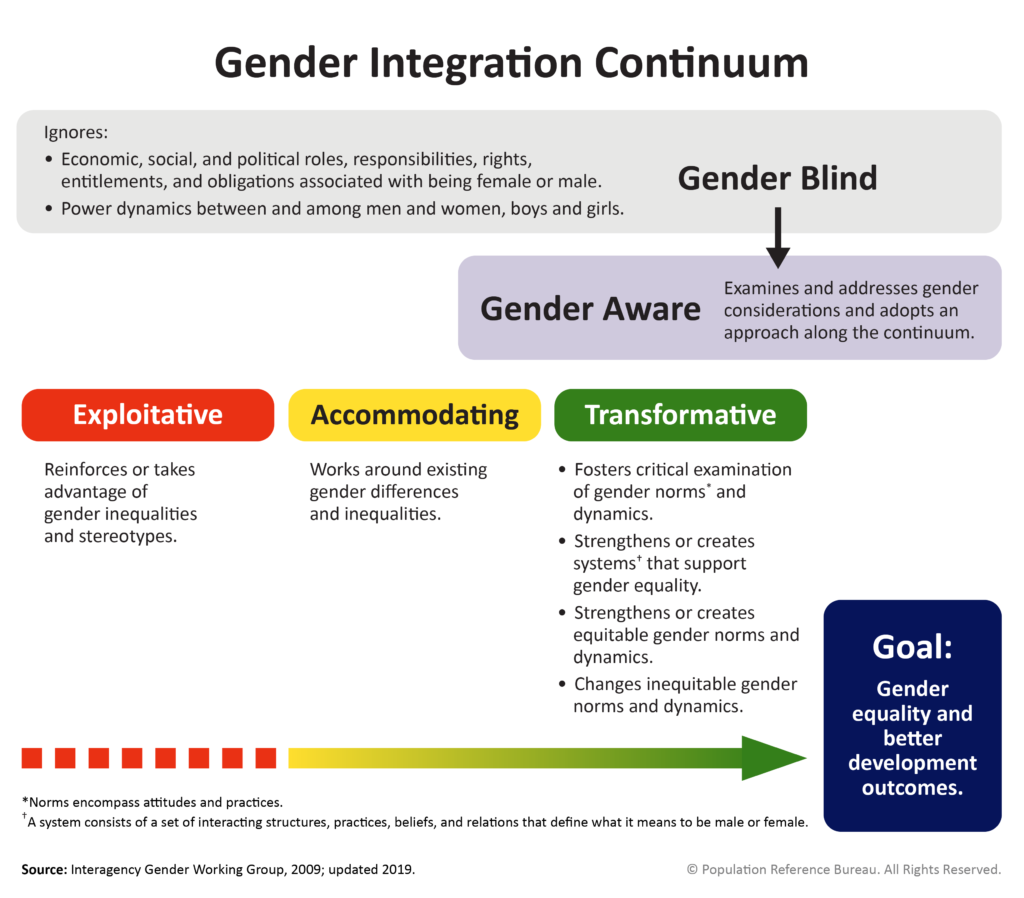The 2023 Interagency Gender Working Group (IGWG) Plenary, Breaking Barriers: Addressing Gender Inequities Facing Global Health Workers, explored how gender transformative programs can better address workplace inequities affecting health workers, and improve health and gender outcomes. The plenary highlighted research examining gender inequities faced by health workers and showcased promising practices and lessons learned from innovative programs working to address gender barriers in the health system workplace.
Ahead of the event, the IGWG asked members to share their personal experiences facing gender inequities and barriers in the health workforce and addressing these inequities in their work, research, and/or advocacy efforts. This web feature showcases these member reflections.
Want to learn more about the 2023 IGWG Plenary? Access event materials, including webinar recordings and slides, here and read the plenary brief here.

